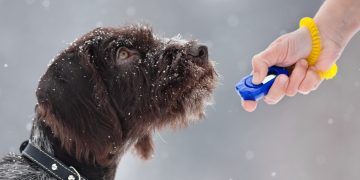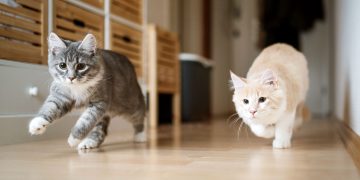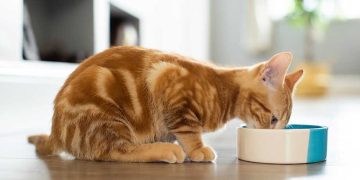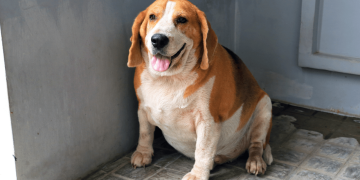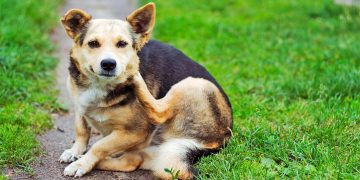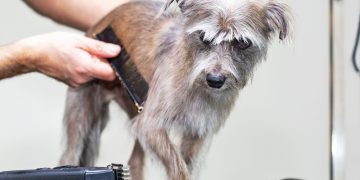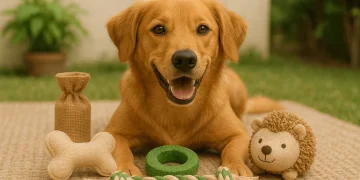Water is often an overlooked aspect of pet care, but it plays a vital role in maintaining your pet’s overall health. While food provides essential nutrients for growth, energy, and maintenance, water is equally as crucial for sustaining life. Your pet’s body is composed primarily of water, and maintaining proper hydration is essential for optimal function, from digestion to temperature regulation.
In this article, we will explore why water is so important for your pet, the signs of dehydration, and practical tips for ensuring your pet stays hydrated throughout the day.
1. The Essential Role of Water in Pet Health
Water is a key element in your pet’s overall well-being, as it is involved in nearly every bodily function. Here are some of the critical roles water plays in your pet’s health:
1.1. Aids Digestion and Nutrient Absorption
Water is essential for breaking down food and helping the body absorb nutrients. It helps to dissolve vitamins, minerals, and other nutrients, making them more accessible to the body. Proper hydration also promotes the production of saliva, which aids in the chewing and swallowing of food.
1.2. Regulates Body Temperature
One of the most important functions of water is temperature regulation. Pets, especially dogs, can struggle to regulate their body temperature, and water helps maintain balance. If a pet becomes dehydrated, their ability to cool off through panting and sweating diminishes, leading to overheating. Proper hydration ensures that your pet’s body can manage its internal temperature and prevent heatstroke, particularly on hot days or during exercise.
1.3. Promotes Joint Health
Water also helps lubricate joints and maintains healthy cartilage. Hydration is especially important for older pets or those with arthritis, as it can reduce stiffness and improve mobility. Ensuring that your pet is adequately hydrated supports healthy, pain-free movement.
1.4. Flushes Toxins and Waste
The kidneys and urinary system rely on water to eliminate toxins and waste products from the body. Proper hydration is crucial for preventing kidney stones, urinary tract infections, and other issues related to the kidneys and urinary system. A well-hydrated pet is less likely to develop problems like bladder infections, which can occur when the urine becomes concentrated due to dehydration.
1.5. Supports Healthy Skin and Coat
Water is necessary for keeping your pet’s skin and coat healthy. Dehydrated pets often have dry, flaky, or dull fur. Adequate hydration helps maintain the elasticity of the skin and supports a healthy, shiny coat. It also reduces the risk of dry skin and associated irritations or itching.
2. Signs of Dehydration in Pets
Dehydration can occur quickly in pets, especially if they are active or exposed to heat. Recognizing the signs of dehydration is key to ensuring that your pet receives the necessary fluids in a timely manner. Some common signs of dehydration in pets include:
2.1. Dry Nose and Gums
One of the first signs of dehydration is a dry nose or gums. If your pet’s nose appears dry or sticky, it may indicate that they are not drinking enough water. Gums should also be moist; if they feel dry or tacky to the touch, dehydration could be the cause.
2.2. Lethargy and Fatigue
Dehydration can cause your pet to become lethargic or sluggish. If your pet is less energetic than usual or unwilling to engage in their usual activities, it may be due to dehydration.
2.3. Loss of Appetite
Pets that are dehydrated often lose their appetite or may refuse to eat altogether. Water is essential for the body to function properly, and without it, your pet may not feel hungry or may struggle to process food.
2.4. Sunken Eyes
If your pet’s eyes appear sunken or dull, this is a significant sign of dehydration. Sunken eyes occur when the body is not properly hydrated, and they are often accompanied by a dry mouth and gums.
2.5. Decreased Skin Elasticity
A quick test for dehydration involves gently pinching the skin on the back of your pet’s neck or between the shoulder blades. When you release the skin, it should snap back into place. If the skin stays “tented” or doesn’t return to its normal position, it’s a sign that your pet may be dehydrated.
2.6. Vomiting or Diarrhea
Excessive vomiting or diarrhea can lead to rapid fluid loss, which puts pets at risk of dehydration. If your pet has ongoing vomiting or diarrhea, it’s important to monitor their hydration levels and seek veterinary care if necessary.
3. How Much Water Does Your Pet Need?
The amount of water your pet needs depends on several factors, including their size, activity level, age, and diet. On average, pets need around one ounce of water per pound of body weight each day. For example, a 10-pound dog should drink approximately 10 ounces of water daily.
However, pets who are more active or are exposed to warmer temperatures may require more water. Additionally, pets on a dry kibble diet tend to drink more water compared to those eating wet food, as wet food contains moisture that contributes to hydration.
3.1. Adjusting Water Intake Based on Activity Level
Active pets, especially those that exercise frequently or spend time outdoors, will need more water to stay hydrated. Always provide fresh water before, during, and after exercise to ensure your pet has access to hydration. Pets who are out in the sun for prolonged periods will need additional water to compensate for the moisture lost through panting.
3.2. Consider Age and Health Factors
Puppies and kittens, as well as older pets, may require different hydration levels based on their specific needs. Young animals have a higher energy output and may need more fluids, while older pets with health issues such as kidney disease or diabetes may be more susceptible to dehydration and need closer monitoring.
Pets with health conditions that cause increased urination, like diabetes, or those on medications that promote fluid loss, may need additional water to prevent dehydration.
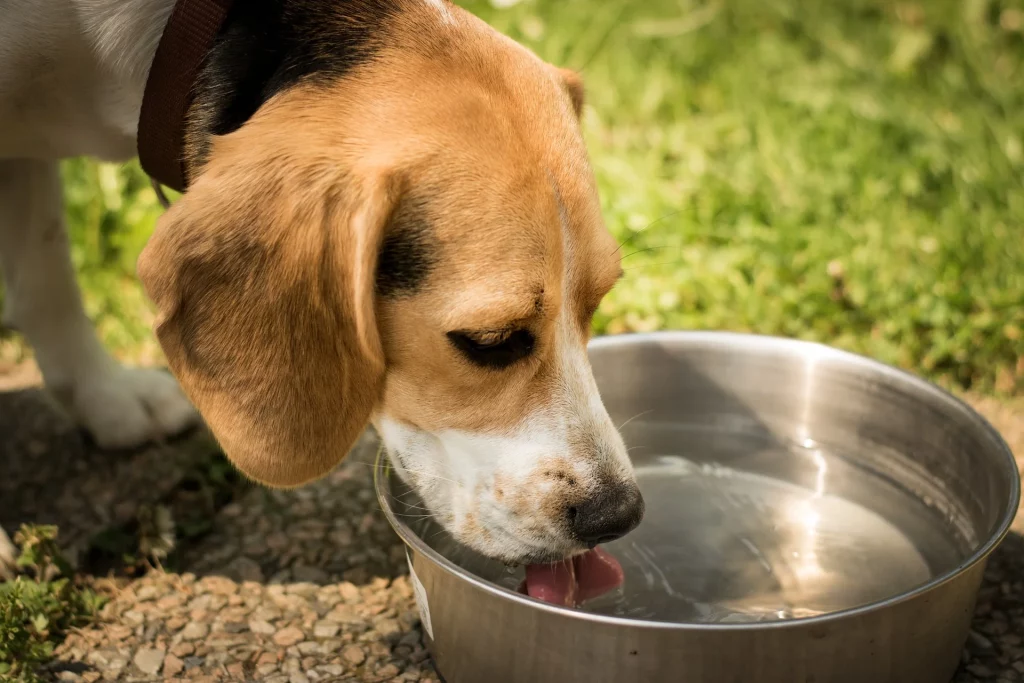
4. Practical Tips for Ensuring Proper Hydration
Ensuring that your pet stays hydrated throughout the day requires a bit of planning and attention. Here are some practical tips to make sure your pet is drinking enough water:
4.1. Provide Fresh Water at All Times
Make sure your pet always has access to fresh, clean water. Change the water at least once a day, and clean the water bowl regularly to prevent bacteria buildup. Some pets may prefer a water bowl with a wide base or specific material, such as ceramic or stainless steel, which can help keep the water cooler for longer periods.
4.2. Use a Pet Water Fountain
Some pets are more likely to drink from a moving water source, so a pet water fountain can encourage them to drink more. Water fountains keep water fresh and aerated, which can make it more appealing to your pet. Many cats, in particular, prefer running water, so a fountain may increase their water intake.
4.3. Offer Wet Food
For pets who are reluctant to drink water, incorporating wet food into their diet is an excellent way to increase their moisture intake. Wet food contains a high percentage of water, which can help supplement your pet’s hydration needs. You can mix wet food with dry kibble to provide a balanced meal while also increasing water intake.
4.4. Flavor the Water
If your pet refuses to drink water, try adding a bit of flavor to entice them. You can add a small amount of low-sodium chicken or beef broth to the water, or you can purchase specially formulated water additives designed for pets. Just make sure the flavors are safe and don’t contain any harmful ingredients like onions, garlic, or excessive salt.
4.5. Monitor Their Water Intake
Regularly monitor how much water your pet is drinking to ensure they are staying properly hydrated. If you notice that your pet is drinking significantly more or less than usual, it could indicate an underlying health issue. Be aware of any changes in their behavior or hydration habits and consult with your veterinarian if needed.
4.6. Keep Water Accessible During Travel
When traveling with your pet, always bring water with you, especially during long trips or in hot weather. Portable water bottles and travel bowls are available, making it easy for you to provide water for your pet on the go.
5. When to Seek Veterinary Help
If you notice signs of severe dehydration, such as vomiting, diarrhea, or sunken eyes, it’s important to seek veterinary care immediately. Dehydration can quickly become life-threatening if left untreated. Your vet will assess the level of dehydration and recommend appropriate treatments, which may include intravenous fluids or electrolyte supplementation.
Additionally, if your pet is drinking excessively or has a decreased appetite despite ample water intake, this could be a sign of an underlying health condition that requires veterinary attention.
6. Conclusion
Hydration is a critical component of your pet’s health, and water is just as important as food in maintaining a balanced, healthy life. Proper hydration supports digestion, regulates temperature, promotes joint health, and helps flush out toxins. By recognizing the signs of dehydration, monitoring your pet’s water intake, and following practical hydration tips, you can ensure that your furry friend remains hydrated and healthy.
Remember that access to fresh water should always be available, and if you notice any changes in your pet’s drinking habits, don’t hesitate to consult with your veterinarian. Keeping your pet hydrated is a simple yet powerful way to improve their overall well-being and ensure they lead a happy, healthy life.





